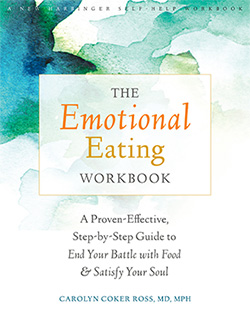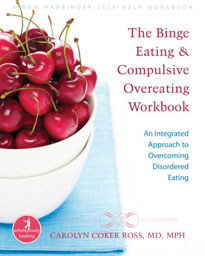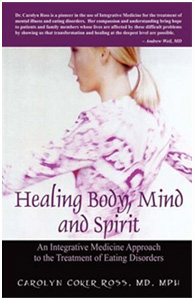 The world has established a clear definition of what ideal weight looks like. The standards may shift through the years, but regardless of how unattainable they may be, they influence how one is perceived. One whose body type isn’t what might be considered the “norm” is often viewed as lesser than or inadequate.
The world has established a clear definition of what ideal weight looks like. The standards may shift through the years, but regardless of how unattainable they may be, they influence how one is perceived. One whose body type isn’t what might be considered the “norm” is often viewed as lesser than or inadequate.
This perspective is harmful and must be shifted.
Body shaming and mental health go hand-in-hand. Even when weight bias is unconscious, the resulting emotions can devastate one’s overall well-being. In the workplace, when unconscious bias occurs, it can also impact one’s ability to be hired or promoted. Regardless of experience, knowledge or skills, qualified candidates are often passed over simply because unconscious bias exists in those responsible for an organization’s recruitment process.
Leaders must combat this issue by creating an inclusive workplace culture where employees feel safe being authentic, knowing they are evaluated on their work, not their weight. Tackling unconscious bias is a complex and sensitive undertaking, especially in the workplace, and is best done with the support of a DEI consultant. An expert DEI consultant can provide insightful advice, practical strategies and masterful guidance as leaders embark on a journey toward eliminating weight discrimination in the workplace.
What Weight Discrimination in the Workplace Looks Like
Weight discrimination places a undue burden on not only those discriminated against but also on the entire workplace. An environment that blindly accepts this bias, whether conscious or unconscious, does not foster well-being. However, when a leader is aware of how weight discrimination can manifest in the workplace, it is possible to implement innovative strategies to eliminate it.
1. Influence of Physical Appearance on Interactions
In a perfect world, everyone would be embraced for who they are and what they look like. In the real world, individuals who do not conform to societal beauty standards, particularly those who are overweight or obese, face negative biases in hiring, promotion and everyday interactions. This body shaming impacts an employee’s career and mental health.
2. Prevalence of Perceived Weight Discrimination in the Workplace
Weight discrimination is common in many workplaces and can result in perceived discrimination against individuals who do not align with conventional body weight norms. Individuals who suffer from perceived discrimination based on body weight often encounter microaggressions, exclusion from professional opportunities, and even workplace bullying. The impact of this internalized weight stigma is detrimental to one’s well-being, and the damage it does to one’s career is often irreparable. While laws safeguard against other forms of bias, such as race and gender, weight discrimination lacks comprehensive legal attention.
3. The Glass Ceiling and Weight Bias in Promotion
Individuals suffering from perceived weight discrimination in the workplace face unimaginable challenges on a day-to-day basis. Exacerbating this is the impact internalized weight stigma can have on one’s opportunities for promotion. The weight discrimination that exists in the hiring process extends to internal advancement opportunities as well, leaving qualified employees unable to advance in their careers simply due to weight bias. Those who do not fit prevailing size norms may be unfairly perceived as lacking the leadership qualities required for managing additional responsibilities. This bias limits their personal growth and hinders organizational diversity, collaboration and innovation.
The Intersection of Gender Disparities and Weight Bias
Exacerbating the unconscious weight bias that can impact an organization’s hiring and selection decisions is the prevalence of gender disparities. Women already face an uphill battle in the corporate world. Add internalized weight stigma, and the outlook becomes even bleaker. This unconscious weight bias in recruitment, hiring and promotion affects women to a much higher degree than their male counterparts. This level of unconscious bias can shatter a woman’s dreams and wreak havoc on their mental health.
Undue Scrutiny of Women’s Appearance
Women already facing undue scrutiny of their professional capabilities simply due to gender are also unfairly judged based on appearance. The intersection between gender and weight bias creates a complex dynamic that is highly challenging to overcome. Studies have consistently shown that women’s appearances are scrutinized more than men’s, leading to biased perceptions that can impact their career trajectories and emotional well-being.
The Impact of Weight on Women’s Earnings and Career Progression
It is remarkable that even in today’s more inclusive world the correlation between weight and income is still particularly more pronounced for women. Unconscious biases and discrimination in hiring and promotion regarding both gender and weight leave women falling far short of their male counterparts in earnings. Economist David Lempert’s analysis underscores the direct link between body weight and reduced earnings, demonstrating that even a moderate increase in body weight can result in a significant income decrease for women. This wage penalty compounds the broader gender pay gap, further impeding women’s economic advancement and professional growth.
Understanding the Psychological Mechanisms of Bias
Tackling unconscious bias is a complex and massive undertaking that requires deep insight, expert guidance and trauma-informed leadership commitment. Before implementing strategies to reduce it, it is imperative to understand the psychological mechanisms at play in the workplace.
1. Weight Stigma Arises Out of Implicit Bias
Implicit biases are deeply ingrained due to repeated exposure to societal norms and media representations. Individuals may unknowingly hold negative associations with certain body types, influencing their judgments and behaviors in professional contexts. The resulting weight stigma can be difficult to overcome, as one must first recognize and acknowledge their bias before being able to address it.
2. Weight Bias is Rooted Early and Reinforced Often
When a behavior or perspective is learned early and reinforced often, it can be extremely challenging to alter. Studies have shown that children as young as three exhibit weight bias, which becomes more pronounced as this perspective is reinforced. The stereotypes typically associated with weight, such as laziness or lack of discipline, then become ingrained and persist into adulthood, infiltrating the workplace.
How to Cultivate Inclusive and Equitable Work Environments
Regardless of what society dictates, every leader has the power to create a workplace environment that is inclusive, equitable and diverse. Employees look to their leader to understand how to behave in the workplace — a strong role model who treats every employee equally and doesn’t tolerate discrimination in the recruitment, hiring or promotion process can positively influence the culture. Ultimately, this will create an environment where every employee has the opportunity for growth and success, regardless of their weight, gender or race.
1. Avoid Discussions that Reinforce Diet Culture or Weight Shaming
Creating an inclusive, diverse and equitable work environment begins with a targeted effort to eliminate dialogue that exacerbates the weight stigma. Instead, leaders can encourage conversations focused on holistic health and well-being. This shift away from weight loss and dieting will aid in preventing the alienation of employees with diverse body sizes. It will also reduce unconscious weight bias that can ultimately impact recruitment, hiring, selection and promotion decisions.
2. Collaboration and Advocacy Bolster Inclusivity
Establishing a culture of “we’re all in this together” enhances employee well-being and will reduce opportunities for weight bias. When teams feel connected, they are more likely to support each other and advocate for those targeted by unfair prejudices. Encourage diversity and inclusivity resource groups to serve as a platform for individuals to share their experiences, raise awareness and drive organizational transformation.
3. Create Avenues for Reporting Bias
A leader can’t be aware of every instance of bias within an organization. By creating a safe and confidential avenue for employees to express concerns without fear of judgment or retaliation, leaders can ensure that bias is recognized and reported. Once notified, organizations must take prompt and meaningful action to address and rectify discrimination.
4. Promote Awareness of the Impact of Weight Discrimination
Keeping the topic of weight stigma and bias at the forefront of one’s mind will aid in ensuring employees are continuously monitoring their behaviors and words to prevent unconscious bias from being exhibited. Organizations may consider offering workshops, training sessions and informational campaigns to educate staff about the psychological, emotional, and professional toll of weight prejudice.
5. Develop Policies to Protect Employees from Weight Stigma
It is imperative that leaders back up their anti-bias words and actions with written policies explicitly outlining zero-tolerance for weight-based discrimination and providing a clear framework for reporting and addressing it. Following are a few examples of meaningful anti-weight bias policies that have been successfully implemented:
- Bullseye Locations: This software company has demonstrated dedication to creating an inclusive and equitable workplace environment with its robust zero-tolerance policy against weight discrimination.
- USSalvageYards: Led by Emma Gordon, this online company has recognized the significance of addressing weight discrimination head-on and urges employees to report instances of weight discrimination.
Navigating the Journey Toward a More Equitable Workplace
Navigating any change brings challenges. When that change is ingrained in society and related to such a sensitive and personal subject as reducing unconscious weight bias, it becomes even more daunting. As a leader strives to eliminate unconscious weight bias and create a more equitable workplace, it is helpful to be aware of common obstacles.
Eliminating Weight Bias Begins At the Top
It may be difficult to accept, but leaders and decision-makers often harbor unconscious weight biases. Despite genuine intentions, these biases can directly impact employees, specifically women of varying body sizes, and hinder their opportunities for growth and success. To successfully combat these biases, it is imperative to understand how they influence one’s perceptions and decisions.
Embracing and Promoting Size Inclusivity
There are many ways to embrace and promote size inclusivity. From designing office spaces that accommodate diverse body types to organizing events that celebrate varied identities, it’s essential to ensure that no employee feels excluded or uncomfortable due to their body size. Not only does this support individual employees, but it also creates a nurturing and inclusive work environment for all.
Avoiding Microaggressions and Other Weight Shaming
Weight bias can be exhibited in ways that may seem inconsequential or invisible. Subtle weight shaming, such as innocuous comments, unsolicited advice about diets or exercise, and even seemingly harmless discussions about health can still have a damaging impact on employees, team dynamics and overall morale. It is imperative to actively avoid weight bias in any form, regardless of how minor it may seem.
Eliminating Discrimination in the Hiring and Promotion Process
The future workplace is inclusive and equitable. Getting there requires determination, dedication and a strong belief in one’s ability to drive change. The journey may not be straightforward, but the guidance of a DEI consultant can aid leaders in avoiding common roadblocks. A DEI speaker, armed with knowledge, experience and insight, offers a roadmap to eliminate unconscious weight bias and create a workplace where everyone thrives, regardless of weight, gender or race. As every leader commands the way with empathy, equality and inclusivity, we can ultimately eliminate unconscious bias in recruitment and weight discrimination in the workplace.







